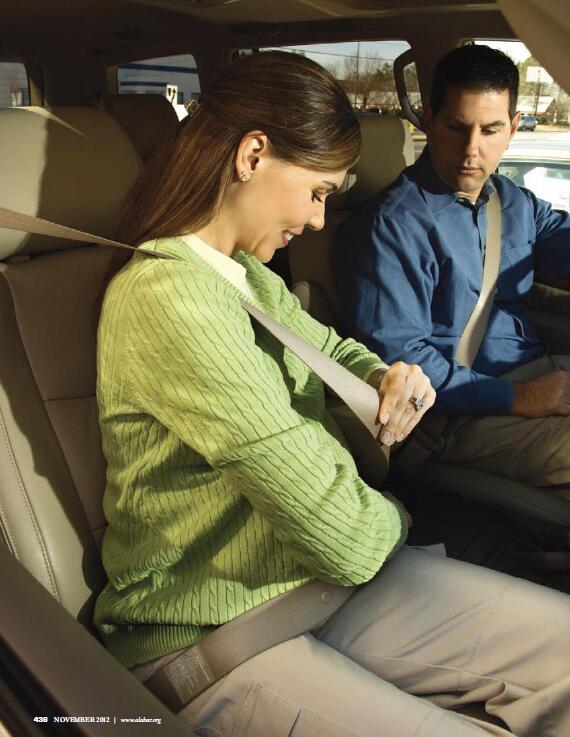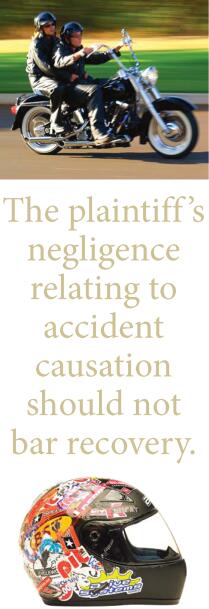The Limited Scope of Contributory Negligence in Aemld-crashworthiness Cases
| Publication year | 2012 |
| Pages | 0437 |
| Citation | Vol. 73 No. 6 Pg. 0437 |
By J. Greg Allen, J. Cole Portis, Benjamin E. Baker, Dana G. Taunton, Stephanie S. Monplaisir, David G. Wirtes, Toby D. Brown, George M. Dent, III, David H. Marsh, Bruce McKee, Larry W. Morris, and Clay Hornsby


In the July 2012 issue of The Alabama Lawyer, an advocacy piece was written by several well-respected members of the Alabama State Bar who primarily defend automobile manufacturers in product liability lawsuits. Their article was entitled Crashworthiness-Based Product Liability and Contributory Negligence in the Use of the Product.1 The sole premise of the article was to contend that contributory negligence, no matter the factual situation, is an absolute defense in any AEMLD case. Hence, they proclaimed that "there should never be a difference between available defenses in what some may deem a 'traditional' AEMLD case as opposed to a 'crashworthiness' case."2 In making this argument, though, the authors ignored Alabama precedent holding that contributory negligence is different in a crashworthiness-based claim. Alabama law is clear. In a crashworthiness case, contributory negligence is not a defense unless the plaintiff negligently uses the product component (usually a safety device such as a seat belt) that plaintiff has alleged caused or enhanced his injury. Contributory negligence is not a defense when the plaintiff negligently causes the accident.3 A crashworthiness case, which is also referred to as the "second collision doctrine" or "enhanced injury doctrine," focuses on whether the alleged defect in a motorized vehicle caused or enhanced the injury, not whether a defect caused the accident.4 Any other reading of the case law contravenes the very purpose of the AEMLD and crashworthiness doctrine-to protect consumers from unreasonable risk of harm caused by manufacturers placing defective products on the market.
The dispute revolves around the difference between negligence as to the product as a whole (e.g., driving the car) versus negligence as to the defective component or safety feature alleged to have caused or enhanced injury (e.g., miswearing a seat belt). Only the latter is appropriate in crashworthiness-the seat belt should not fail whether the driver, a third party or unavoidable circumstances caused the collision.
The Supreme Court of Alabama created the Alabama Extended Manufacturer's Liability Doctrine (AEMLD) in 1976 when it handed down the simultaneous decisions of Casrell v. Altec Industries, Inc., and Atkins v. American Motors Corp.5 The AEMLD was not a pure strict liability doctrine. Instead, the court adopted a fault-based liability doctrine.6 "The fault of the manufacturer, or retailer, is that he has conducted himself unreasonably in placing a product on the market which will cause harm when used according to its intended purpose."7 The manufacturer's liability was subject to certain limited affirmative defenses, i.e., contributory negligence, assumption of the risk, misuse of the product and lack of causal relation.8
In 1985, the Supreme Court of Alabama adopted the "crashworthiness doctrine" with its landmark decision in General Motors Corporation v. Edwards.9 In Edwards, the court found that, "while a manufacturer is under no duty to design an accident-proof vehicle, the manufacturer of a vehicle does have a duty to design its product so as to avoid subjecting its user to an unreasonable risk of injury in the event of a collision."10 A crashworthiness case is one in which the defect in the product "is not alleged to have caused the collision but only to have caused the injuries suffered therein." 11 The court noted that:
[C]ollisions are a statistically foreseeable and inevitable risk within the intended use of an automobile, which is to travel on streets, highways, and other thoroughfares, and that, while the user must accept the normal risk of driving, he should not be subjected to an unreasonable risk of injury due to a defective design. 12
Therefore, a crashworthiness case focuses on the injury and not the accident. The Supreme Court of Alabama noted that the crashworthiness doctrine met "the purpose of the AEMLD, which is to protect consumers against injuries caused by defective products."13
Edwards did not create a new cause of action separate from the AEMLD but rather a new theory that could be brought under the AEMLD. 14 The Supreme Court of Alabama recognized that the elements of proof necessary to establish a crashworthiness claim are the same elements necessary to prove an AEMLD claim.15 That is, regardless of which theory a plaintiff alleges, he must prove that a defect in the product proximately caused his injury.16 It is the application of the available defenses, though, which distinguishes a crashworthiness claim from the broader AEMLD claim. In crashworthiness cases, contributory negligence is limited to the plaintiff's failure to use reasonable care in using the product alleged to be defective, such as not properly wearing a defective seatbelt. 17 Defendant motor vehicle manufacturers hotly dispute this established doctrine by arguing that a plaintiff's allegedly negligent driving should always be considered in every crashworthiness case because, after all, "a product is still a product, and negligence is still negligence."18 To accept this argument, though, is to completely ignore the essence of a crashworthiness case as set forth in Edwards-since accidents are foreseeable, an individual should not be put at a greater risk of injury due to a product component that does not perform as intended in an accident. 19
Under Dennis, Accident Causation Is Not a Defense To a Crashworthiness Claim
The debate over the application of contributory negligence under the AEMLD began with Dennis v. American Honda when the Supreme Court of Alabama held that contributory negligence relating to accident causation would not bar recovery under the AEMLD. 20 In Dennis, a motorcyclist suffered permanent brain damage when his motorcycle collided with a log truck.21 The plaintiff argued that the helmet was defective and did not provide adequate protection.22 The defendant countered that the plaintiff was driving negligently and did not properly use the motorcycle.23 The defendant argued that the plaintiff caused his own injuries by causing the accident with the truck, 24 and, thus, that any alleged defect in the helmet did not cause plaintiff's injuries. 25 In holding that the defense of contributory negligence as it applied to accident causation was not a defense to recovery in AEMLD actions, the supreme court stated:
A plaintiff's mere inadvertence or carelessness in causing an accident should not be available as an affirmative defense to an AEMLD action. To allow a plaintiff's negligence relating to accident causation to bar recovery will go against the purpose of the AEMLD, which is to protect consumers from defective products. The defense of contributory negligence in an AEMLD action should be limited to assumption of the risk and misuse of the product. The plaintiff's negligence relating to accident causation should not bar recovery. 26

Defense attorneys, however, continually downplay and ignore Dennis, and, instead, point to Williams v. Delta Machinery, 27 Haisten v. Kubota Corp.28 and Burleson v. RSR Group Florida, Inc. 29 to argue that contributory negligence in causing an accident is allowed under the AEMLD. Their reliance is misplaced, primarily because none are crashworthiness cases. In Williams v. Delta Machinery, the plaintiff lost his little finger and most of his thumb while pushing a board across an expandable dado blade.30 The plaintiff sued under the AEMLD. The jury returned a general verdict in favor of the defendants, and the plaintiff appealed, asking the Supreme Court of Alabama to determine whether the rule in Dennis applied. 31 Although the plaintiff did not object to the trial court charging the jury on contributory negligence, the court addressed the "specific holding" of Dennis "because there appears to be some confusion." 32 The court attempted to clarify its decision in Dennis with the following:
If the contributory negligence instruction had been limited to the plaintiff's failure to exercise reasonable care in his wearing of the helmet (i.e., if it had related to an alleged product misuse), then such an instruction would have been proper under this Court's previous interpretations of the AEMLD . . . The trial error in Dennis was in not limiting the contributory negligence charge to the plaintiff's use of the helmet as opposed to the plaintiff's allegedly negligent operation of his motorcycle. 33
The Williams court held that Dennis did not prohibit the use of contributory negligence in that case where the plaintiff's "negligence was predicated solely upon his misuse of products-the table saw and the dado blade-neither of which was a safety device being used as intended by the manufacturer to protect people from negligent acts." 34 Therefore, Williams affirmed the holding in Dennis: contributory negligence in AEMLD cases is limited to circumstances where the plaintiff has failed to use reasonable care in using the defective product and limited, when the alleged defect is in a safety device, to contributory negligence in the use of the safety device itself. The Williams court did nothing to change the Dennis rule as it applies to crashworthiness cases.

In Haisten v. Kubota Corp., a plaintiff sued the tractor manufacturer and distributer when his Kubota tractor rolled over, causing the rotary blade to seriously injure his legs.35 Haisten argued that the Kubota tractor was defective in design because it did not contain a rollover protection system (ROPS)...
To continue reading
Request your trial
